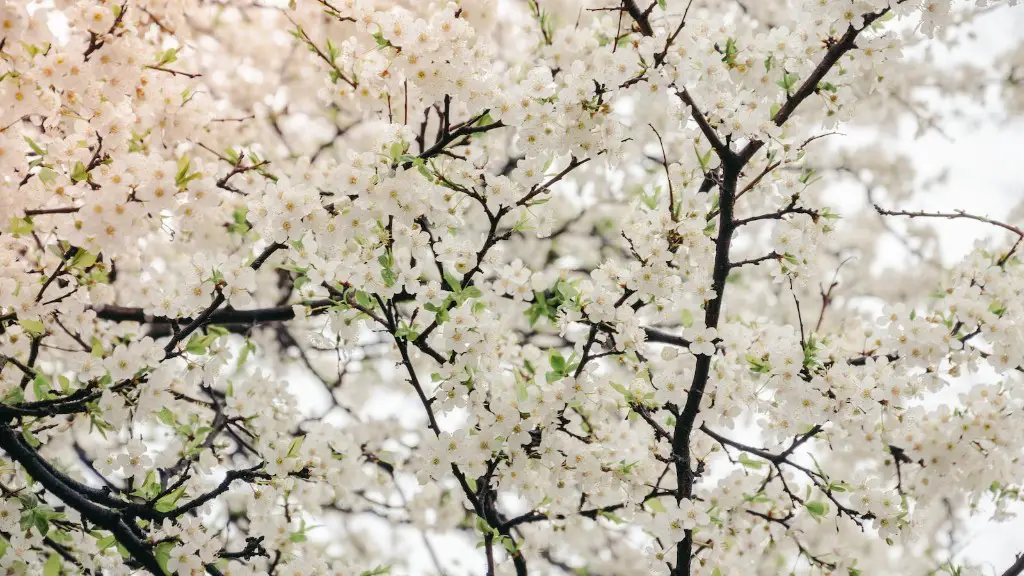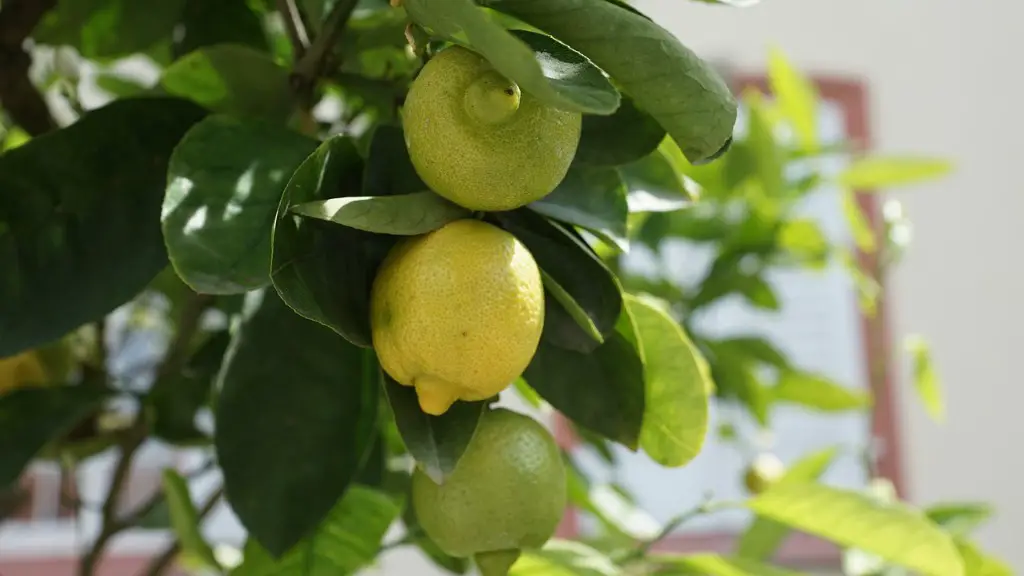Pruning a cherry tree is one of the best things you can do for its health and long-term production. Pruning on a regular basis can boost the tree’s vigor, enhance its flowering and fruiting, and help its branches develop strong framework and prevent disease and insect infestations.
The best time to prune your cherry tree is in late winter or early spring while the tree is still dormant. Pruning should not be done once leaves appear on the tree. When cherry trees have lush foliage, attempting to prune too deep or removing too many leaves at once can be damaging and weaken the tree.
In general, the art of pruning cherry trees is no different than basic pruning practices for any other type of tree. The primary goals are to remove any damaged, diseased, dead, or intersecting limbs, and to promote strong branch structure and growth. Most cherry trees should not be pruned heavily, as this can lead to excessive sprouting. In fact, excessively pruned cherry trees are generally less productive.
When pruning, you should use sharp bypass pruning shears, loppers, and a pruning saw. You should aim to make a clean cut to the branch or limb just outside the branch collar. When a branch is removed, the branch collar should be left intact. Removing too much of the collar can injure the tree and open the tree up to diseases. Avoid using pruning paint, as it restricts the wound’s ability to heal quickly.
When pruning cherry trees, it’s important to remember that the trees should have a strong central leader. This leader is at the top of the tree, and it is the main stem or trunk through which the branches spread. Pruning the tree incorrectly can cause it to become lopsided, meaning that it will grow in a sideways pattern. Additionally, lopsided trees can become top-heavy and split in storms.
The best way to avoid damaging your cherry tree is to prune judiciously and avoid removing large, mature branches. When it comes to pruning cherry trees, quality is more important than quantity. Never remove more than 25% of the tree’s branches at once, as this could be too much for the tree to handle. Additionally, the bigger the cuts made to the tree, the longer it will take the cherry tree to heal itself and the stature of the tree can be affected.
Tools and Supplies Needed for Pruning Cherry Trees
Before pruning your cherry tree, make sure that you have the right tools and supplies at hand. The most important tools you will need for pruning a cherry tree include bypass pruning shears and loppers, a pruning saw, and a ladder to reach higher branches. It’s also wise to wear safety glasses and gloves to keep yourself safe from potential injury. In addition to tools, you should also have a bucket or bag to collect the trimmings and rubbish.
The Different Pruning Methods
There are many different pruning methods and every cherry tree is different, so it’s important to consider the tree’s shape and size when pruning. As a general rule, smaller branches should be pruned using the three-cut technique, while larger branches should be removed in one clean cut. The three-cut technique is used to reduce the chance of the branch ripping off the trunk or splitting. When using the three-cut technique, start by making a cut about one-third of the way through the branch, about two inches out from the trunk. Then, make a cut from the bottom of the first cut down to the trunk, and finally make a final cut from the top to remove the branch.
How to Unload Pruned Branches from the Tree
Once you’ve completed a pruning session, the branches will need to be unloaded from the tree. To do this, you should use a saw, pruning shears, or loppers to cut the branches free from the tree. When cutting, it’s important to keep the tool clean and make a clean cut. Once the branches have been cut free, you should start at the bottom of the tree and work up, as this will help make it easier to carry the branches.
When to Stop Pruning Cherry Trees
Once you’ve pruned the tree, it’s important to know when to stop. Pruning cherry trees should not be done all at once, but should be done gradually throughout the growing season. Too much pruning can cause the cherry tree to become weak, and it will be less productive. Furthermore, too much pruning can disrupt the tree’s growth and rip it apart in storms. If you are unsure how to prune correctly, it’s best to consult a professional arborist for help.
How to Care for Pruned Cherry Trees
After pruning, it is essential to take care of the tree to ensure its vigor and productivity into the future. After pruning, the tree should be watered deeply and evenly, and the soil around the base of the tree should be mulched and fertilized. You should also inspect the tree periodically to ensure it has been adequately watered and fertilized. Additionally, it’s important to check for signs of damage or disease, and take steps to address any issues right away.
Where to Buy Suitable Pruning Tools
It’s important to have the right tools at hand when pruning cherry trees. While pruning tools can be expensive, shopping around should help you find quality tools at a reasonable price. Your local gardening center or garden supply store should have shears, loppers, and saws suitable for pruning cherry trees. It’s also possible to purchase pruning tools online from reputable retailers.
Benefits of Pruning Cherry Trees
Pruning a cherry tree can help to ensure its health and productivity in the long term. Pruning can help promote strong branch structure, remove diseased or infested branches, and encourage healthy growth. Additionally, proper pruning can help improve the size and quality of its fruit, and help the cherry tree become more resistant to pests and diseases.
Tips for Pruning Cherry Trees
Before you start pruning your cherry tree, it’s important to familiarize yourself with its structure and the different pruning techniques. When pruning, remember to remove no more than 25% of the tree’s branches at once, and never remove large mature branches. Additionally, use clean, sharp tools and make sure to always leave the branch collar intact when removing a branch. Finally, prune in late winter or early spring to ensure the best results.


